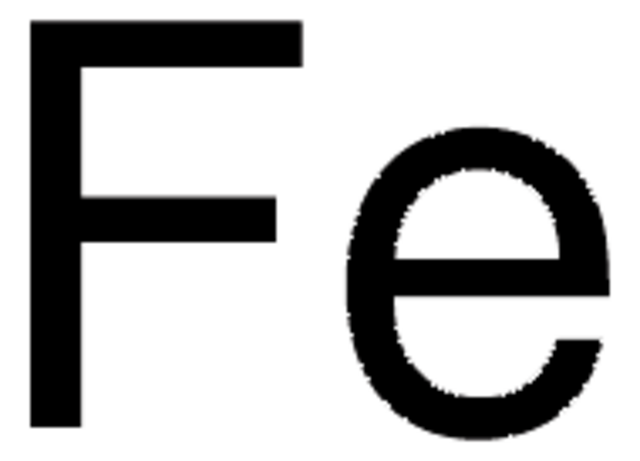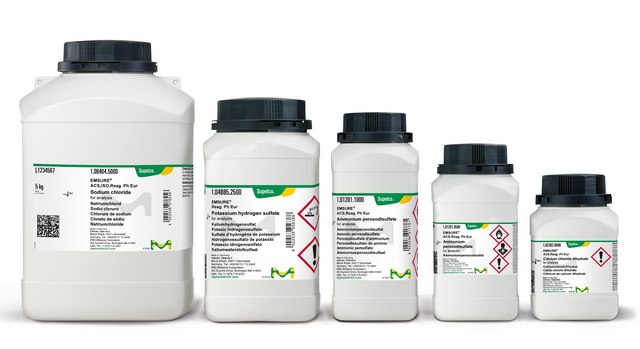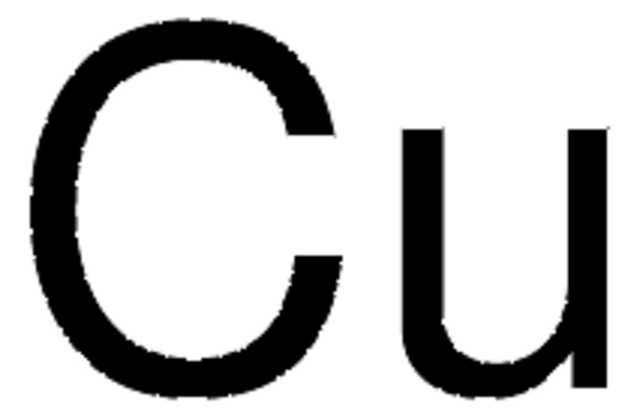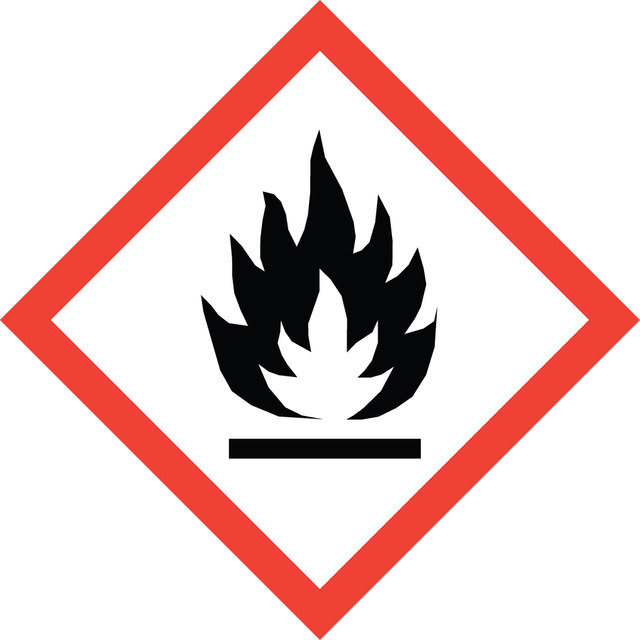267953
Iron
powder, <10 μm, ≥99.9% trace metals basis
Synonym(s):
Fe
Select a Size
Select a Size
About This Item
Recommended Products
Quality Level
Assay
≥99.9% trace metals basis
form
powder
reaction suitability
core: iron
reagent type: catalyst
resistivity
9.71 μΩ-cm
particle size
<10 μm
bp
2750 °C (lit.)
mp
1535 °C (lit.)
density
7.86 g/mL at 25 °C (lit.)
SMILES string
[Fe]
Related Categories
Application
- Reduction of nitroaromatic compounds to aromatic amines.
- Iron-mediated polymerization of methyl methacrylate (MMA) in the presence of a reversible addition-fragmentation chain transfer (RAFT) agent, 2-cyanoprop-2-yl 1-dithionaphthalate (CPDN).
- Synthesis of pyrrolo[1,2-a]quinoxaline derivatives.
- Conversion of ketoximes to the corresponding ketones by treatment with iron powder.
- Iron-catalyzed cross-coupling reaction of imidazoles with vinyl bromides and vinyl chlorides.
Signal Word
Warning
Hazard Statements
Precautionary Statements
Hazard Classifications
Flam. Sol. 2 - Self-heat. 2
Storage Class Code
4.2 - Pyrophoric and self-heating hazardous materials
WGK
nwg
Flash Point(F)
69.8 °F
Flash Point(C)
21 °C
Personal Protective Equipment
Regulatory Information
Choose from one of the most recent versions:
Already Own This Product?
Find documentation for the products that you have recently purchased in the Document Library.
Articles
An article concerning self-propagating reactions induced by mechanical alloying, presented by Sigma-Aldrich.com.
Higher transition metal silicides are ideal for anisotropic thermoelectric conversion due to their Seebeck coefficient anisotropy and mechanical properties.
Our team of scientists has experience in all areas of research including Life Science, Material Science, Chemical Synthesis, Chromatography, Analytical and many others.
Contact Technical Service



